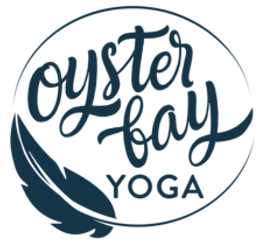by Diane Lucchese (200HR CYT & Reiki Practitioner)
When I first started practicing yoga, I entered with doubts of my ability. Never did I realize that yoga is for everybody at every level. Whenever a child's pose was offered I took it, every chance I could get, and even when it wasn’t offered I would drop to my knees and surrender. That’s it, I surrendered. I thought, wow this is great! I don’t have to do everything the teacher says to do! Actually, I don’t have to do anything other than a child's pose. I can just stay here for fifty minutes. I’m joking about that, but I did utilize child's pose often. Dropping into a child's pose gave me time to collect myself. I would reconnect to my breath, organize my thoughts and then meet up with wherever the rest of the class was at. It allowed me to not get frustrated with my ability, that in turn helped me to persevere and come back to class week after week and eventually day after day.
Until I met Utkatasana, yep,(fierce pose, commonly known as “chair pose”). Utkatasana, now we really didn’t get along at first. I mean, draw your hips back, bend your knees, engage your core, lift your chest, parallel your arms by your ears. That sounds ridiculous, so unnatural for the body. Not to mention my quads would start to burn. I didn’t enjoy that feeling at all. It was just too much for me to do at one time. Somehow or another I would end up in a child's pose and think about Utkatasana. I would collect myself, take some breaths, and try it again. I thought to myself, why does Utkatasana bother me so much? Maybe it was me, not the pose. I thought to myself, Utkatasana, you and I are going to become friends. Somehow or another we are going to make this work. From that point on, whenever Utkatasana was offered, I tried it, I tweaked it, and made adjustments that felt right for my body. I decided I should rise to the challenge. I was not going to let an asana intimidate me or distract me from the big picture of yoga. Of course there are some asanas that I prefer over others but, I choose to meet those poses that are not my “favorites” somewhere in the middle. This in turn helps me to not get frustrated with the overall practice of yoga. I allow myself that privilege of acknowledging I don’t particularly like every asana but that doesn’t mean I don’t like yoga overall.
When practicing yoga or any physical discipline, allow yourself to meet challenges halfway and find a compromise with whatever it is that you don’t enjoy. But don’t let it stop you from doing yoga or any other form of exercise entirely. Find a balance, a modification that will allow you to accept it and continue with your practice.



